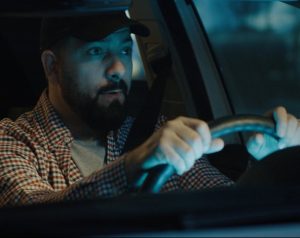For many of us, traveling by car is a daily occurrence. Be it to work, to school, or to run errands, the average American spends up to one hour a day behind the wheel. While a short drive to work may not make us fatigued, longer journeys can leave drivers in a state of highway hypnosis, barely remembering any part of a drive until they reach the final destination.
While this may not seem like a bad thing, highway hypnosis, or white line fever, is a very dangerous form of distracted driving. If you are involved in a collision with a distracted driver in Washington, DC, Virginia, or Maryland, the car accident lawyers at Regan Zambri Long are here to help.
Highway hypnosis, otherwise known as white line fever, is believed to be the hypnotic state drivers may find themselves in when driving a long distance without remembering the vast majority of the commute. It can result in delayed communication between the brain and other parts of the body, resulting in accidents and injury.
The term highway hypnosis was given by Griffith Wynne Williams and is characterized by the monotony and overall visual fixation a driver experiences on highways. This does not result in sleeping behind the wheel as in some cases, the driver may still react appropriately to changes in the road and other drivers, but the memory of the drive is not there. However, the act of driving on autopilot can become fatal when the driver is also fatigued, or under the influence.
Highway hypnosis is very common among long-haul truck drivers as they may spend up to 14 hours a day driving according to the Federal Motor Carrier Safety Administration (FMCSA). Because of this, the driver may be highly trained and this autonomous action may not be alarming at all, but, when the driver is fatigued, this can lead to fatalities.
Conversely, the untrained driver who finds themselves the victim of white line fever may not be as well-prepared to drive in a state of auto-pilot, resulting in devastating consequences.
However, sleepy or fatigued driving is not the only cause of highway hypnosis. Other causes of white line fever include:
It is important to note that driving under the influence of drugs and/or alcohol and lack of sleep increase the dangers of white line fever.
The symptoms of highway hypnosis are similar to those of drowsy driving. Common signs include:

If you are experiencing highway hypnosis, you may also experience the feeling of “snapping out of it” which can be a jarring experience that may also impact your ability to control the vehicle.
Much like other forms of distracted driving, highway hypnosis can result in catastrophic injuries and damage. For example, highway hypnosis is believed to be blamed for a 2013 commuter train derailment in New York City that led to the death of four people.
That being said, highway hypnosis isn’t just a danger to larger vehicles like trains and commercial trucks, passenger vehicle drivers may also experience white line fever on extended road trips.
Because highway hypnosis is a form of drowsy driving, similar dangers do exist. These include:
Preventing white line fever may be easier said than done, especially for truck drivers. However, there are steps you can take to avoid highway hypnosis and other forms of distracted driving.
It is estimated that 1 in 25 adult drivers (aged 18 years or older) have fallen asleep while driving. Drowsy driving results in thousands of crashes and injuries and hundreds of deaths each year. To prevent this, drivers can make sure they get a restful night’s sleep, and in the event they do not, delay travel time until enough rest has been achieved.
One of the leading factors of highway hypnosis is monotony on the roadways with minimal turns and limited scenery changes. Because of this, drivers should take ample breaks to walk around, stretch, and get out of the vehicle.
A little bit of physical activity will help you raise your heart rate, increase blood flow, and keep you alert when you do get back on the road.
On a nice summer day, it’s not uncommon to see drivers listening to loud music with the windows down. There is actually some science behind why the type of music you listen to can impact your driving.
Studies show that listening to music with 60 to 80 beats per minute helps provide the ultimate balance in keeping alert while also maintaining a strong heartbeat to boost reaction times. This includes songs like “Billionaire” by Travie McCoy and Bruno Mars.
Know that music with too much energy can have the opposite effect, reducing reaction time.
Depending on how you are traveling and with whom, you can also switch drivers to help avoid highway hypnosis. This allows the initial driver to get up and stretch and provides an opportunity to recharge before the next leg of the journey.
In cases where switching drivers is not possible, be sure to pay attention to your body’s needs. If you are too tired to continue driving, it may be time to pull over.

Unfortunately, highway hypnosis and other cognitive distractions behind the wheel can be difficult to prove in court. At Regan Zambri Long, we represent drivers who are injured in collisions by distracted drivers in DC, VA, and MD and we can do the same for you.
Our car accident attorneys can help you collect economic damages and depending on the severity of your injuries and the specific facts of the case, non-economic damages to help you move forward from this traumatic experience.
For a no-obligation, free consultation, contact the car accident lawyers of Regan Zambri Long by calling (202) 960-4596 or by contacting us online.